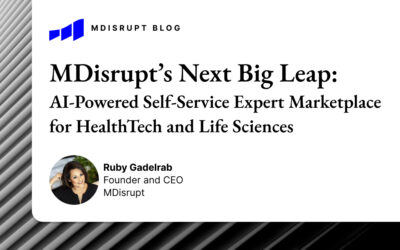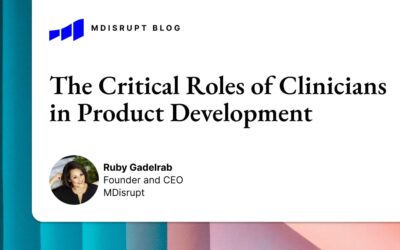Collaborations between healthtech startups and healthcare systems are being announced left and right these days. As you embark on the customer journey, you will undoubtedly be asked about the value your product or service adds and, most relevant to this conversation, whether there is a role for a pilot project in demonstrating the value you bring to a health system. Is a pilot just a hoop to jump through on the way to a sale—or can a pilot be a key tool in your mission to bring value to your customers?
Health system pilots can be conducted for free, at a discount, or at full price. They can test proof of concept, validate a technology, or be used as part of a sales strategy. Regardless of the specific type, I would argue that pilots can be an effective mechanism to make the case for your product or service. However, the key is to ensure that the outcomes of the pilot are of value to both the startup and the health system.
Generally, health systems are looking for solutions that solve one of more of the following problems:
- Does it improve patient health outcomes?
- Does it reduce healthcare spend?
- Does it increase access to care?
- Does It improve the patient and/or physician experience?
So how do you actually deliver a meaningful, valuable pilot? Here are three crucial things to consider:
Are your endpoints convincing enough to lead to a sale?
Here’s an example. Take a company, let’s call it eMD, with an AI tool designed to automate a key process. The eMD team has had positive conversations with a health system customer, “West Care,” and the next step is to do a pilot with one particular team.
As is typical with technology validation pilots, this one is designed to provide evidence that the AI tool does what it sets out to do. The results of the automated process will be compared to the results generated by the West Care human team. If the results are comparable or better, the pilot will be deemed a success. But is that enough to convince West Care decision makers to move forward with a vendor agreement? If not, thinking through how the following questions can help create a better pilot.
What else could you aim to discover, and what will you and your customer learn from the results?
Consider incorporating an endpoint that is of particular value to your health system customer. This, of course, requires you to understand what your customer needs. In particular, you have to identify an outcome that would be so valuable that a customer would actually pay for it.
In the case of eMD and West Care, the pilot is only designed to report on the technology validation endpoint. It may also be important for eMD to do a study comparing the time needed for a human to do the specific task with the time needed by the AI tool. This gives decision-makers a tangible basis for financial decisions.
You want the results of your pilot to lead to deeper conversations around value. For example, could the AI tool capture more revenue by making the process more efficient? If implementing this AI tool measurably frees up staff time, what other revenue-generating activities can those employees be redirected to? If your pilot doesn’t provide evidence to answer value-based questions like these, you haven’t made the most of the opportunity.
What action do the results of the pilot need to lead to, for both you and your customer?
It’s important to have a clear plan of action post-pilot, and that means you need to define when the pilot is over. For eMD, a pilot may consist of two weeks of onboarding and training, followed by two weeks of the AI tool performing the process, then a final week to analyze and present the data. If that was everything, though, the West Care team would likely be left wondering where things would go next.
To guide the outcome toward what you want, you need to set expectations for the presentation of the pilot summary and findings. What is the format and who needs to be present? Do not limit a final presentation to those directly involved with the pilot, as that may exclude key decision makers. Ensure that the person with buying power is in the room, or at least met with separately. Once you know your audience, think through what may be of greatest value in their decision-making and address it in the presentation of the findings.
It’s also a good idea to provide a roadmap to the health system partner outlining a few potential paths forward. The conversation should be driven by the evidence you’ve gathered, but it needs to get people’s wheels spinning about future possibilities. Where could we go from here? What would be required of each of us? What would be lost if we don’t continue this work together? Don’t assume that your audience will have next steps in mind. Instead, take time to explore the possibilities together.
Health systems need to know that a new healthtech solution will add value. Value can be delivered in many different ways, depending on the stage of your company.
Keep in mind that in the pilot phase, regardless of any compensation involved, the health system is investing the time and expertise of its people in testing your product. The outcomes you’re working side-by-side to achieve should be meaningful to both parties involved and lead the way to a value-driven purchase decision.
A pilot can be more than a necessary stepping stone to a bigger sale. If done well, a pilot can lay the foundation for your work with a key customer and demonstrate your commitment to bringing value to their organization.
The MDisrupt community of experts is committed to guiding healthtech entrepreneurs and health systems through the design, execution, and evaluation of impactful pilots. If you are a healthtech founder just embarking on the pilot process, or a seasoned entrepreneur in the midst of the journey, please reach out—we are happy to help.

Claire Kolar, PharmD, PhD
Dr. Claire Kolar is an experienced clinician, researcher, and strategy partner with a background in education, infusion and specialty pharmacy, and genomics. She is the Director of Operations at Fairview Ventures, a health system based venture group located in Minneapolis, MN, where she navigates the integration and implementation of new technologies into complex healthcare ecosystems. She also collaborates with health tech startups on business model development that add value to engagements with health system partners
If you are a healthtech company that requires help designing pilots or defining a strategy to work with health systems, MDisrupt can help, please click here



